Return to Sitka.com – Return to Sitka Stories and News
From the Smithsonian Institution Bureau of American Ethnology
Tlingit Myths and Texts
Collected in Sitka and Wrangell in 1904, published 1908
A man named Nātsałane’, belonging to the Tsague’dî (Seal people), made killer whales. He first tried to carve them out of red cedar, then out of hemlock, then out of all other kinds of wood in succession. He took each set of figures to the beach and tried to make them swim out, but instead they floated up on the surface. Last of all he tried yellow cedar, and was successful.
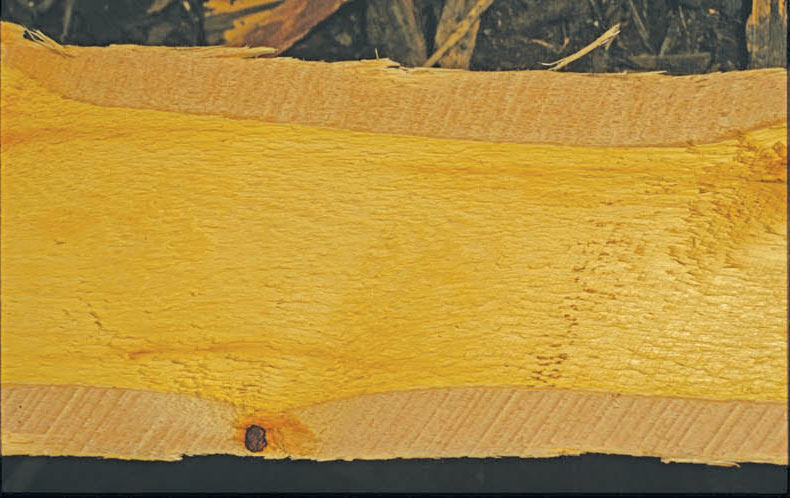
He made these of different sorts. On one he marked white lines with Indian chalk from the corners of its mouth back to its head. He said, “This is going to be the white-mouthed killer whale.” When he first put them into the water he headed them up the inlet, telling them that whenever they went up to the heads of the bays they were to hunt for seal, halibut, and all other things under the sea; but he told them not to hurt a human being. When you are going up the bay, people will say to you, “Give us something to eat.” Before this people did not know what the killer whale is.
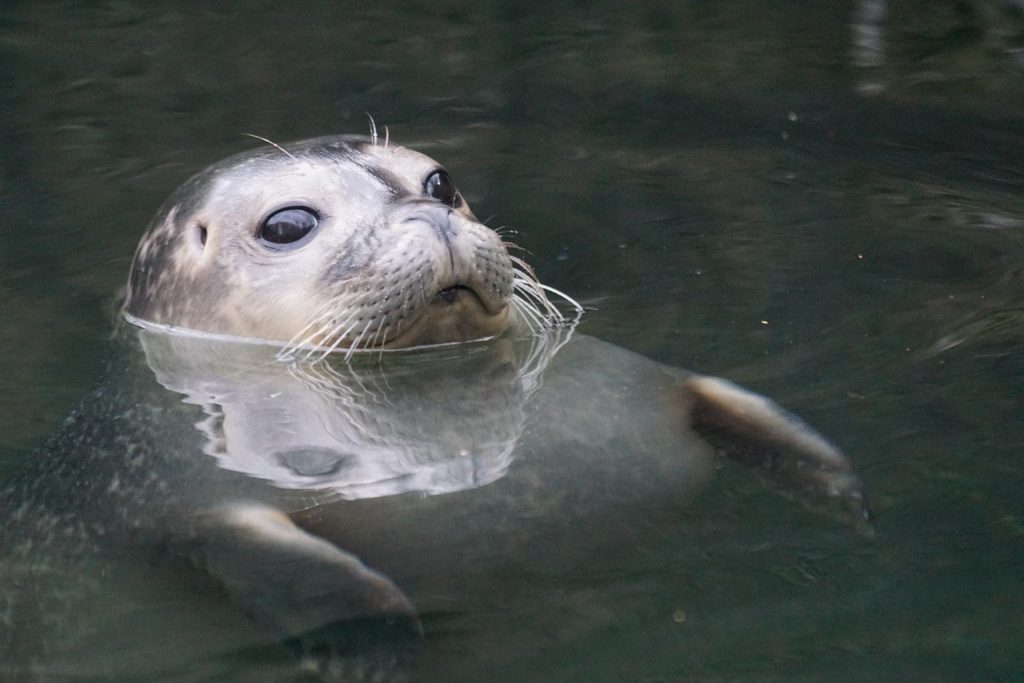
Another thing people did not know was that the killer whale could go ashore and camp. One time a man married a high-caste woman and went up to the head of a certain bay with her, because he knew that the killer whales always went there. On the way they saw a campfire blazing upon the shore. There were killer whales encamped here, but he thought they were human beings and landed to see them. When they got close in, he jumped into the water to urinate. All at once the killer-whale chief said, “I feel people’s looks. Go outside and look on the beach.” But, when they saw him urinating, they started off, leaving their camp just as it was, jumped into the water, and swam away.
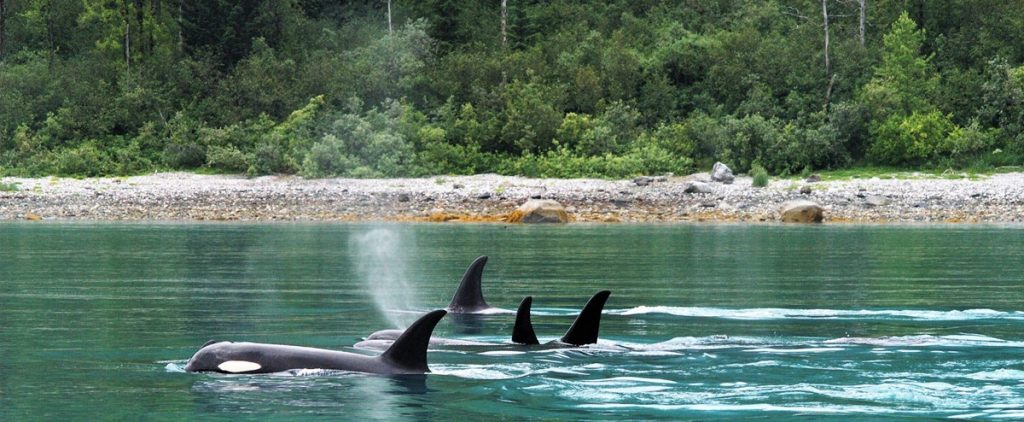
Then he went up to the camp with his wife, and they saw all kinds of food there. His wife said, “It is lucky that we came across this;” and after a while the man said, “Let us cook some, my wife.” Then the woman took her cooking basket and put some water into it. Presently she said, “Way out there is a canoe coming.” It was a black canoe. She said, “We better leave this alone until the canoe comes so that we can invite them to eat with us.” Her husband said, “All right.” By and by his wife said, “What is the matter? To my eyes it does not appear like a canoe. It is too black.” It was really a young killer whale, under which the other killer whales were swimming to make it appear like a canoe. When the supposed canoe reached land, the whales rushed ashore, seized the woman, who had concealed herself behind her husband, and carried her down to the sea. They took her away because her husband had taken their provisions. This time, when the killer whales rose again, instead of appearing like only one canoe, they came up out of the water thick everywhere and began to swim down the bay very fast. Meanwhile the husband went down to his canoe, got in, and paddled after them along the shore. But, when they came to a high cliff where the water went down deep, all the whales suddenly dived out of sight.
Now the man climbed to the top of this cliff, fastened a bough to his head and another slim spruce bough around his waist, filled the space inside of his shirt with rocks, and jumped into the ocean at the spot where his wife had disappeared, falling upon a smooth, mossy place on the bottom. When he awoke, he arose, looked about, and saw a long town nearby. He entered the last house, which proved to belong to the chief of the shark people.
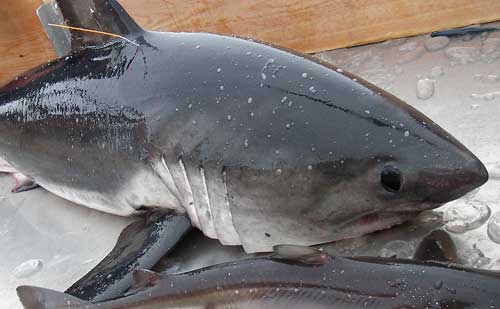
In this house he saw a man with a crooked mouth peeping out at him from behind a post. A long time before, when he had been fishing, a shark had cut his line and carried off the hook, and it was this hook that now peeped out at him. It said, “Master, it is I. When your line broke, they took me down here and have made me a slave.”
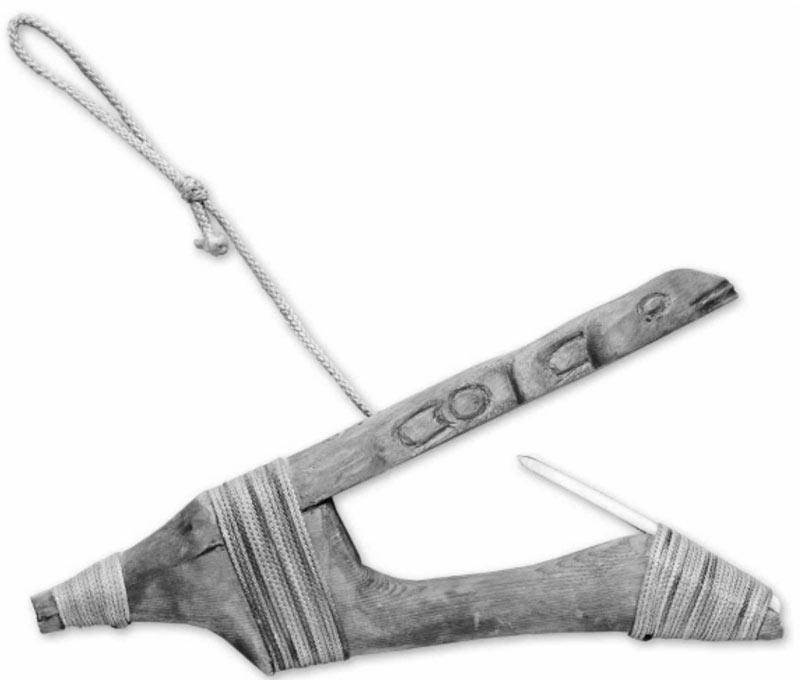
Then he said to the shark chief, “Is there any news in this town?” and he replied, “Nothing especial in our town, but right across from us is the killer-whales’ town, and recently we heard that a woman had been captured there and is now married to the killer whale chief.” Then the shark chief continued: “The killer-whale chief has a slave who is always chopping wood back in the forest with a stone ax. When you come to him, say within yourself, ‘I wish your stone ax would break.’ Wish it continually.” So the shark instructed him.
Then he went over to the killer-whale town, and, when the slave’s ax did break, he went up to him and said, “I will help you to fix that stone ax if you will tell me where my wife is.” So he began to fix it in place for him. It was the only stone ax in the killer-whale tribe. Then the slave said, “I always bring wood down and make a fire in the evening, after which my master sends me for water. When you see me going after water, come to the door and wait there for me. As soon as I come in I am going to push over the fire. At the same time I am going to empty the water into it so as to make a quantity of steam. Then rush in and carry out your wife.”
The man followed these directions and started away with his wife. Then his halibut hook shouted, “This way, my master, this way.” So he ran toward the shark people’s town, and they pursued him. Now the killer whales attacked the shark people because they said that the sharks had instructed him what to do, and they killed many sharks.
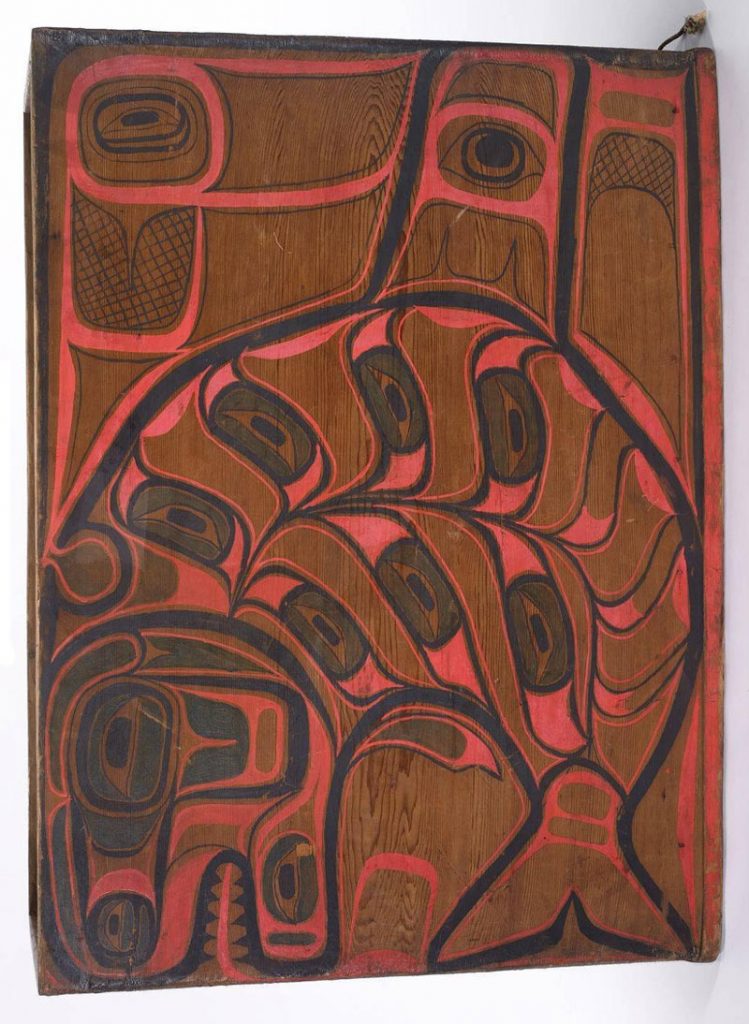
In return the sharks began to make themselves strong. They were going out again to fight the killer whales. They went to some rocks and began sharpening their teeth. Then they began the battle, and whenever the killer whales approached, the sharks would run against their bellies and rip them open, letting out their entrails. The whole bay was full of killer whales and sharks. What happened to the woman is not told.
When the killer-whale tribe start north the seals say, “Here comes another battle. Here come the warriors.” They say this because the killer whales are always after seals. Killer whales are of different kinds, and the one that always swims ahead is the red killer whale, called “killer-whale-spear” (Kīt-wusā’nî). It was so named by the man who made these animals because he shaped it long and slender. The Tsague’dî, to which this man belonged, are a branch of the Daqʟ!awe’dî; therefore the Daqʟ!awe’dî are the only people who make the killer whale their emblem. ( The Wū’ckitan (Wooshkeetaan) must, however, be added. )
On their way to us the first killer whales came into a bay called Kots!ē’ʟ!, after Ts!ēʟ!, the first man who came to that bay. They encamped at its head and the day after began digging into the cliff. The land there is not very high, so they were soon through, laid skids down, and carried their canoes across. Some people watched them. The killer whales always used to cross at the place where they laid down these skids, and now people cross there. It is called Killer whale-crossing place (Kītgū’nî), but is now overgrown with trees and underbrush. (This place is said to be on the north arm of Tenakee bay, where a canal has been projected to enable boats to reach Huna more easily.)